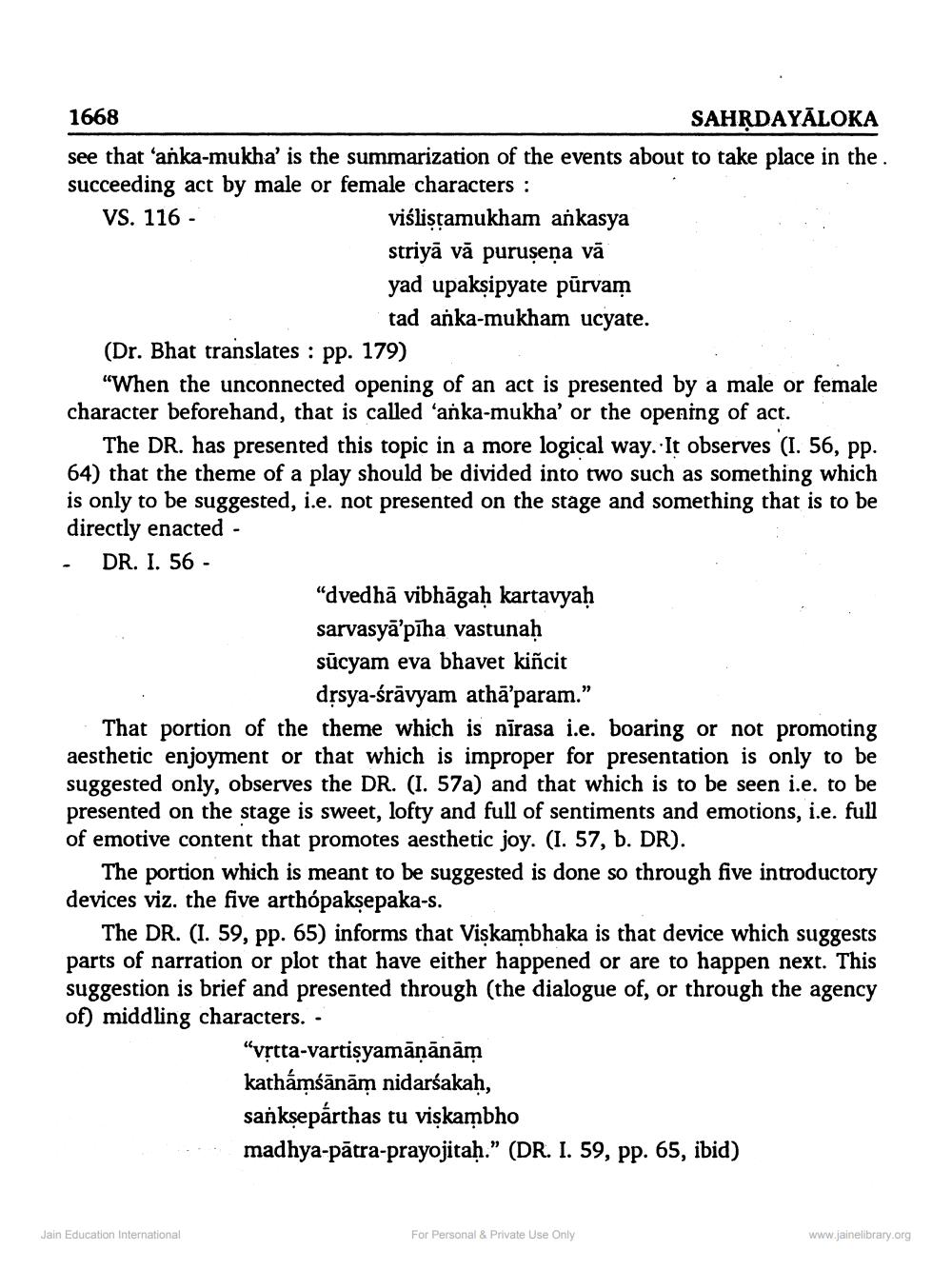________________
1668
SAHRDAYĀLOKA see that ‘anka-mukha' is the summarization of the events about to take place in the . succeeding act by male or female characters : VS. 116 -
vislistamukham ankasya striyā vā purusena vā yad upaksipyate pūrvam
tad anka-mukham ucyate. (Dr. Bhat translates : pp. 179)
"When the unconnected opening of an act is presented by a male or female character beforehand, that is called 'anka-mukha' or the opening of act.
The DR. has presented this topic in a more logical way. It observes (I. 56, pp. 64) that the theme of a play should be divided into two such as something which is only to be suggested, i.e. not presented on the stage and something that is to be directly enacted - - DR. I. 56 -
"dvedhā vibhāgaḥ kartavyaḥ sarvasyā'pīha vastunaḥ sūcyam eva bhavet kiñcit
drsya-śrāvyam athā’param.” That portion of the theme which is nīrasa i.e. boaring or not promoting aesthetic enjoyment or that which is improper for presentation is only to be
sted only, observes the DR. (1. 57a) and that which is to be seen i.e. to be presented on the stage is sweet, lofty and full of sentiments and emotions, i.e. full of emotive content that promotes aesthetic joy. (I. 57, b. DR).
The portion which is meant to be suggested is done so through five introductory devices viz. the five arthópaksepaka-s.
The DR. (I. 59, pp. 65) informs that Viskambhaka is that device which suggests parts of narration or plot that have either happened or are to happen next. This suggestion is brief and presented through (the dialogue of, or through the agency of) middling characters. -
"vștta-vartisyamāṇānām kathámśānām nidarśakaḥ, sanksepárthas tu viskambho madhya-pātra-prayojitaḥ." (DR. I. 59, pp. 65, ibid)
Jain Education International
For Personal & Private Use Only
www.jainelibrary.org




